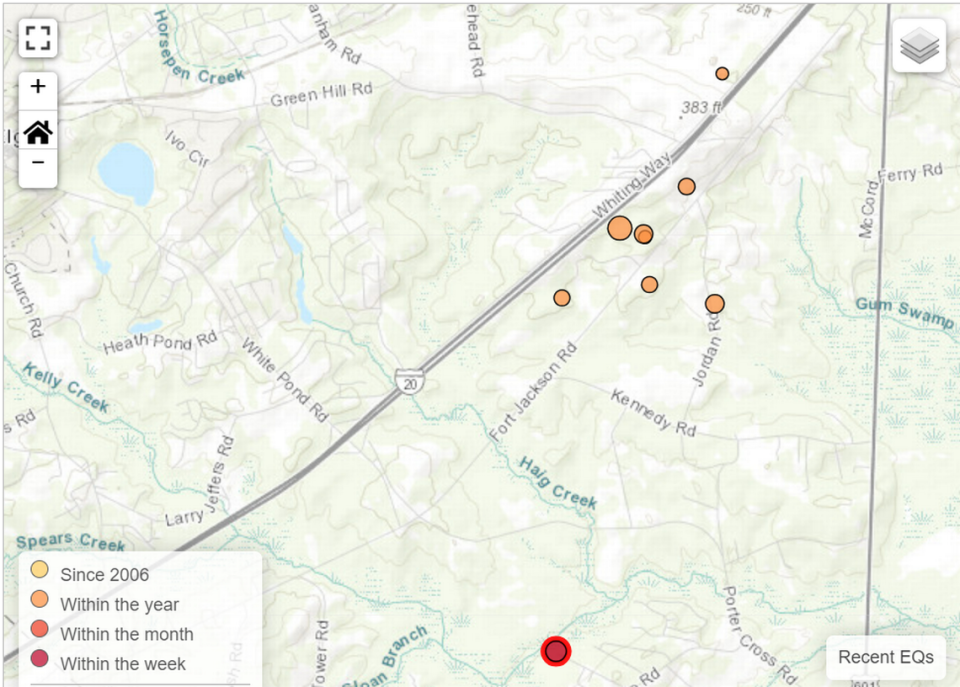Another earthquake hits tremor-prone area of the Midlands near Fort Jackson
A small earthquake sent tremors through part of Kershaw County on Friday afternoon, according to seismologists at the United States Geological Survey. It was the first seismic activity in months in an area that has been repeatedly hit with seismic activity.
The earthquake, which registered a magnitude of 2.24 on the Richter scale, struck at 12:24 p.m. near Spears Creek Road, which is located in Kershaw County, northeast of the Fort Jackson military base. It was the first recorded earthquake in South Carolina since a 1.72 magnitude earthquake was detected in Sangaree on Aug. 5.
Ten people reported feeling the earthquake. It was recorded at a depth of 2.9 kilometers, just under 2 miles, according to the geological survey. Earthquakes under a magnitude of 2.5 are rarely felt or cause damage but can be recorded by seismographs.
Friday’s earthquake was the 14th confirmed earthquake in South Carolina in 2023, according the state Department of Natural Resources. This exceeds South Carolina’s annual average of six to 10 earthquakes per year.
It was also ninth confirmed earthquake in the area north of Fort Jackson and east of Elgin along the Interstate 20 corridor in the past year. The last quake to hit the area was recorded less that 4 miles away on June 20, at a magnitude of 2.01.

Although the sparsely populated area has been hit regularly by earthquakes, they have been relatively small. The strongest earthquake to hit that area in the last year was a 2.54 magnitude quake that was recorded on Oct. 30, 2022.
While South Carolina does have concentrated pockets of seismic activity, the area is comparatively understudied compared to land west of the Rocky Mountains, according to the USGS.
The nearest tectonic plate boundaries are in the center of the Atlantic Ocean and in the Caribbean Sea, but the USGS reports that, while the region is laced with known faults, many smaller or deeply buried faults remain undetected or poorly located.
As a result, “few, if any, earthquakes in the inland Carolinas can be linked to named faults,” according to the USGS.

